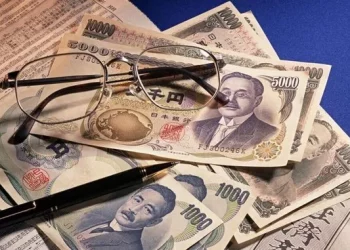In the world of foreign exchange (forex) trading, currency conversion is a key aspect of global finance. Whether you’re an investor, a business owner, or simply someone looking to convert money for travel, understanding how exchange rates work and how much a specific amount of money is worth in another currency is crucial. One common question that often arises is: How much is 2000 US dollars (USD) in Australian dollars (AUD)?
In this article, we will explore the mechanics of currency exchange, the factors that influence the exchange rate, and provide insight into how to calculate the equivalent of 2000 USD in AUD. We will also discuss the significance of exchange rate fluctuations and how to approach currency conversion strategically, especially for individuals and businesses involved in forex trading.
The Concept of Exchange Rates
At its core, an exchange rate is the value of one currency relative to another. It determines how much one currency is worth when exchanged for another. For example, if the exchange rate between the US Dollar (USD) and the Australian Dollar (AUD) is 1 USD = 1.50 AUD, it means that for every 1 US Dollar, you would receive 1.50 Australian Dollars in exchange.
Exchange rates fluctuate constantly due to various economic, political, and market factors. These fluctuations can be influenced by interest rates, inflation, geopolitical events, and market sentiment. As a result, the value of currencies like the US Dollar and the Australian Dollar can vary from day to day, hour to hour, and even minute to minute.
How Exchange Rates are Determined
Several factors influence the exchange rate between the US Dollar and the Australian Dollar. These factors include:
Interest Rates: Central banks, such as the Federal Reserve in the US and the Reserve Bank of Australia (RBA), set interest rates that have a significant impact on currency values. Higher interest rates tend to attract foreign investors seeking better returns on investments, leading to an increase in demand for that currency. For instance, if the Federal Reserve raises interest rates, it may lead to an increase in demand for the US Dollar, causing its value to rise relative to other currencies like the AUD.
Inflation: The rate of inflation in a country can also impact the value of its currency. Higher inflation often erodes the purchasing power of a currency, which can lead to a depreciation in its value. Conversely, lower inflation can strengthen a currency, making it more attractive to investors.
Trade Balances: A country’s trade balance—whether it has a trade surplus (exports greater than imports) or a trade deficit (imports greater than exports)—affects its currency’s strength. Australia, for example, is known for its exports of commodities like iron ore, coal, and natural gas. A trade surplus can support the strength of the Australian Dollar against other currencies, including the US Dollar.
Political Stability: The political environment in a country can significantly affect its currency’s value. Political instability or uncertainty can cause investors to pull their money out of a country, weakening its currency. Conversely, a stable political environment can attract investment and bolster the currency.
Commodity Prices: Australia is a major exporter of commodities, and its currency tends to be closely linked to global commodity prices. For instance, when the prices of iron ore, gold, and other raw materials rise, the Australian Dollar often strengthens. A drop in commodity prices, on the other hand, can lead to a weakening of the AUD.
Market Sentiment: Investor sentiment plays a huge role in currency movements. If investors feel optimistic about the US economy, they may buy US Dollars, driving up its value. On the other hand, if global economic conditions are uncertain, investors may seek safer assets, such as the US Dollar, leading to an appreciation of the USD.
Current Exchange Rates Between USD and AUD
To understand how much 2000 US dollars are worth in Australian dollars, we need to check the current exchange rate between USD and AUD. Exchange rates can fluctuate significantly, so it’s important to use real-time data.
For the purpose of this article, let’s assume that the exchange rate is 1 USD = 1.50 AUD. This is a simplified example, as the actual exchange rate will vary, but it provides an easy illustration of how conversion works.
To convert 2000 USD to AUD using this exchange rate, the calculation would be:
2000 USD × 1.50 = 3000 AUD
So, based on an exchange rate of 1 USD = 1.50 AUD, 2000 US dollars would be equivalent to 3000 Australian dollars.
How Exchange Rates Affect Currency Conversion
The exchange rate between two currencies determines how much one currency is worth in terms of the other. In the case of the US Dollar and the Australian Dollar, fluctuations in this rate can have a significant impact on individuals and businesses involved in currency exchange.
If you are traveling from the United States to Australia, for example, understanding the exchange rate is critical for budgeting purposes. The rate determines how much Australian currency you will receive in exchange for your US dollars, and any fluctuations in the rate could result in more or less money than expected.
For businesses, the exchange rate is a key factor in international trade. Companies that import goods from Australia or export goods to Australia need to account for fluctuations in the exchange rate when setting prices, negotiating contracts, or planning financial strategies. A strong US Dollar, for instance, can make Australian goods cheaper for US businesses, while a weak US Dollar may make exports more expensive.
Factors that Cause Fluctuations in USD to AUD Rates
The exchange rate between the US Dollar and the Australian Dollar fluctuates due to a variety of economic and geopolitical factors. Below are some common reasons for these fluctuations:
Interest Rate Differentials: As mentioned earlier, interest rates set by central banks play a crucial role in determining the value of a currency. If the Federal Reserve raises interest rates while the Reserve Bank of Australia keeps rates unchanged, the US Dollar may appreciate relative to the Australian Dollar. Conversely, if the RBA raises interest rates while the Federal Reserve does not, the AUD may strengthen against the USD.
Commodity Price Movements: Since Australia is a major exporter of commodities, changes in commodity prices have a significant impact on the Australian Dollar. For example, if the price of iron ore or coal rises, the AUD may strengthen, as increased demand for these commodities can lead to higher export revenues for Australia. On the other hand, a drop in commodity prices can weaken the AUD.
Global Economic Conditions: Economic conditions in both the US and Australia, as well as the global economy, can affect exchange rates. During periods of economic uncertainty or financial crises, investors often seek safe-haven assets like the US Dollar, which can lead to a stronger USD. Conversely, during periods of economic growth and optimism, riskier assets (such as the AUD) may become more attractive.
Political Developments: Political events, such as elections, policy changes, and international tensions, can influence currency values. If there is political instability in either the US or Australia, it could lead to a decline in confidence in that country’s currency, causing its value to fall.
Market Speculation: Forex markets are also influenced by speculative trading. Investors and traders buy and sell currencies based on their expectations of future exchange rate movements. If traders believe that the US Dollar will appreciate against the Australian Dollar, they may buy USD and sell AUD, causing the value of the USD to rise relative to the AUD.
Conclusion
When it comes to currency conversion, the value of 2000 US dollars in Australian dollars depends on the current exchange rate between USD and AUD. This exchange rate is influenced by a range of factors, including interest rates, inflation, trade balances, and global economic conditions. Therefore, it is essential to stay informed about the latest market trends and exchange rate movements if you are involved in forex trading or need to convert currency for personal or business purposes.
At a rate of 1 USD = 1.50 AUD, 2000 US dollars would be equivalent to 3000 Australian dollars. However, as exchange rates fluctuate, it is important to check the current rates before making any conversions. By understanding how exchange rates work and the factors that influence them, you can make more informed decisions when converting currency or engaging in forex trading.
In the world of forex, timing is crucial. Knowing when to convert currency can make a significant difference in the amount of foreign currency you receive. Whether you are an investor, traveler, or business owner, having a solid grasp of exchange rates and the factors that influence them can help you optimize your currency conversion strategy and protect against adverse market fluctuations.
Related Topics:



























